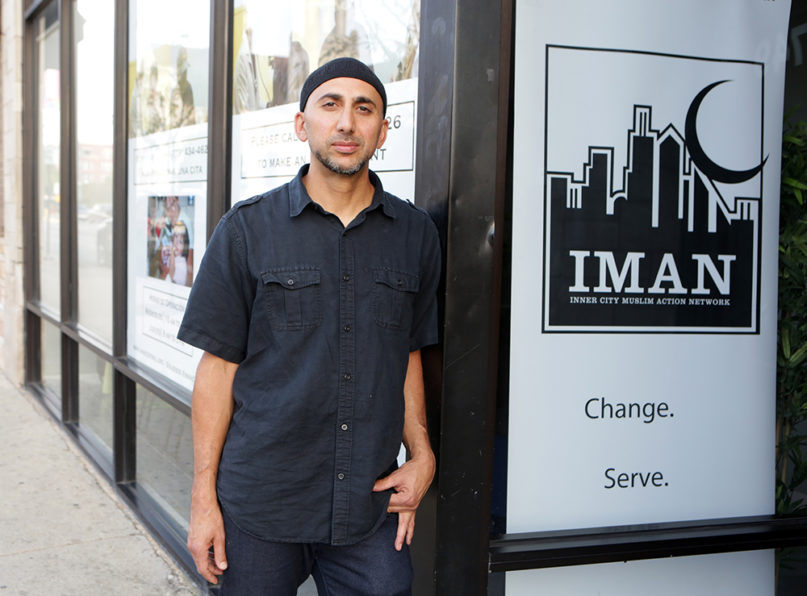(RNS) — Rami Nashashibi, who founded the Inner-City Muslim Action Network on Chicago’s South Side 25 years ago, is a community builder, a teacher and a recipient of a MacArthur Foundation “Genius” award. Georgetown University has called him one of the world’s 500 most-influential Muslims.
What he is not is an imam. He is part of a rising generation of lay leaders blending ancient tradition with modern activism to mobilize their faith communities. Leaders such as Nashashibi are not replacing traditional institutions or houses of worship, but they bring an immediacy to their faith-based work that is re-energizing American religion.
Born in Jordan to Palestinian parents, Nashashibi founded IMAN in 1997 with his friend Abdul-Malik Ryan, a lawyer and Muslim convert, in Chicago Lawn, a traditionally Black neighborhood that was rapidly becoming a hub for Arab Americans. The two had the goal of providing a place where first-, second- and third-generation Muslim Americans, converts and non-Muslims would all feel included.
But at the heart of IMAN’s work is the Black Muslim experience. “Those second-generation immigrants, young people and people like myself — children of refugees and immigrants — would be deploying the larger African American narrative to assert our Americanness,” said Nashashibi in a recent interview. “You know, I — we — will be talking about Muhammad Ali and Dave Chappelle (and people would say), ‘Wait, wait, wait, wait, wait, you’re citing Black American Muslim after Black American Muslim. Something’s wrong with this picture, and it’s coming out of the mouths of everyone except Black American Muslims.'”
RELATED: An awakening is coming to American religion. You won’t hear about it from the pulpit.
More specifically, however, IMAN’s model is adapted from the empowering wisdom of Black Muslim women, who for generations have built relationships with communities to organize for social change. Black Muslim women have been institution builders who have created new templates for Muslim life in America. “It’s critical to understand that there would not be an American Muslim experience without Black American Muslim women,” he said.
That orientation can be seen in IMAN’s focus on providing safe spaces and health care, but also emotional, spiritual and artistic resources to high-risk youth and others who struggle most with social justice issues. IMAN’s Green ReEntry greets those returning from prison with housing.
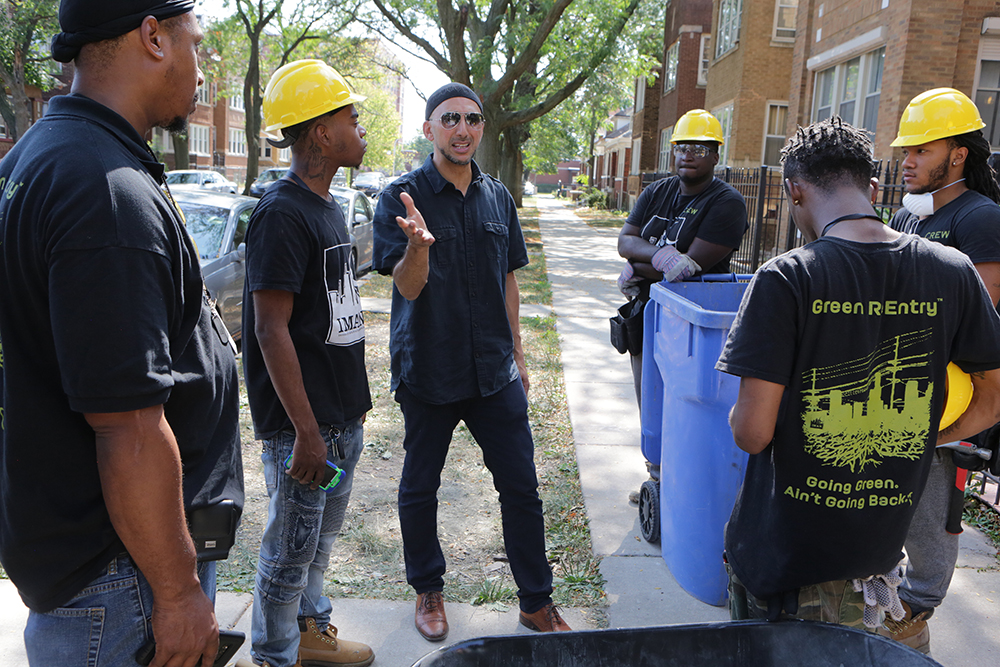
Rami Nashashibi, center, speaks with Inner-City Muslim Action Network Green ReEntry participants in Chicago in 2017. Photo © John D. and Catherine T. MacArthur Foundation- used with permission.
Nashashibi credits, perhaps counterintuitively, Elijah Muhammad, who led the Nation of Islam from the 1930s until the 1970s, with laying the bedrock for this larger sense of Muslim community — “not the theology,” Nashashibi made clear, “which is problematic for a number of reasons, not the least because of the ways other religious communities get discussed.” The Nation of Islam is disavowed by orthodox Muslim leaders as a political movement more than religious and blatantly antisemitic.
But he equally credits Elijah Muhammad’s wife, Clara, with founding the network of Clara Muhammad Schools, a homeschool alternative to what were often substandard inner-city public schools. “That legacy and tradition is certainly what birthed the momentum that led to the Inner-City Muslim Action Network being incorporated,” he said.
He also cites American Muslim leaders who are tapping into Black Muslim history today. “Among our colleagues,” Nashashibi said, “perhaps one of the most important online communities that’s being created to engage this topic is Sapelo Square and (its founder), Su’ad Abdul Khabeer,” which Nashashibi calls “an unapologetic celebration of that Black American Muslim narrative that has often not been highlighted.”
But all Muslims and indeed all kinds of Americans can find meaning in the Black Muslim narrative, he said, which is “connected in very meaningful ways to the granular experience of children of immigrants who, growing up in the same neighborhoods, were struggling with many of the same things: poverty, violence, police brutality, economic disparity, criminal disinvestment, stigmatizing … all of the trappings of layers of white supremacy and how they embed themselves into urban geography of a place, like the South Side of Chicago.”
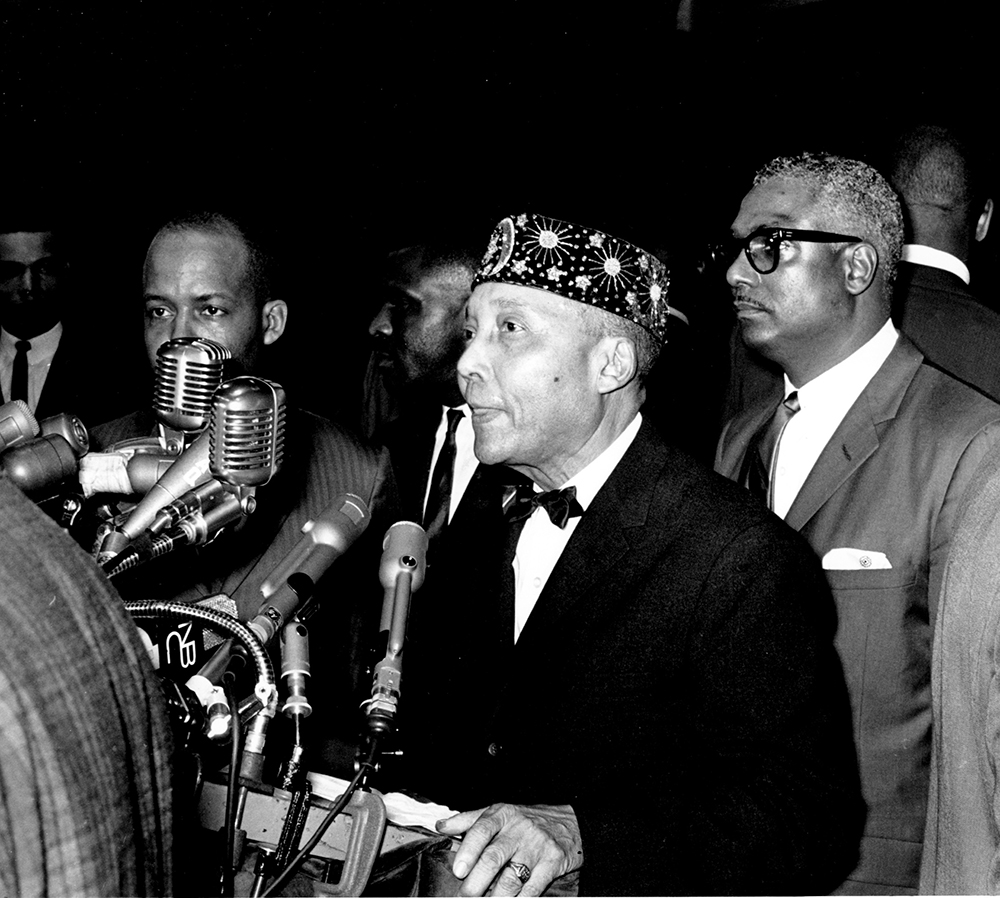
Elijah Muhammad addresses the concluding session of the Nation of Islam annual convention at Chicago Coliseum in Chicago, Illinois, on Feb. 28, 1966. (AP Photo)
Elijah Muhammad, as well as groups such as the Moorish Science Temple, strongly countered white hate of the first half of the 20th century with alternative movements that claimed Black dignity and even, in the case of the Nation of Islam, Black divinity. These ideas became an embodied form of resistance to injustice and a path to love of self and community.
Nashashibi adapted this underlying ethos, while carefully separating it with intention from the offensive beliefs now associated with it.
“To have a movement that inverted that assertive kind of Black divinity, if you will, and the idea that (the white supremacists’ hate) was carried out by devilish people … that had a lot of traction. It became the bedrock that got filtered into Malcolm X’s speeches, which filtered into the (Black Nationalist) Five Percent Nation, which filtered into hip-hop, which became a powerful early movement that brought Black, brown, white, Jewish, Muslim and Hindu kids together to express their discontent with the oppressive structures that pit us against one another, that segregated us in our own ghettos in our own urban silos,” said Nashashibi.
“For me that’s what raised the hip-hop kind of sensibility and eventually what inspired me and … helped me find a relevant spiritual life,” he added.
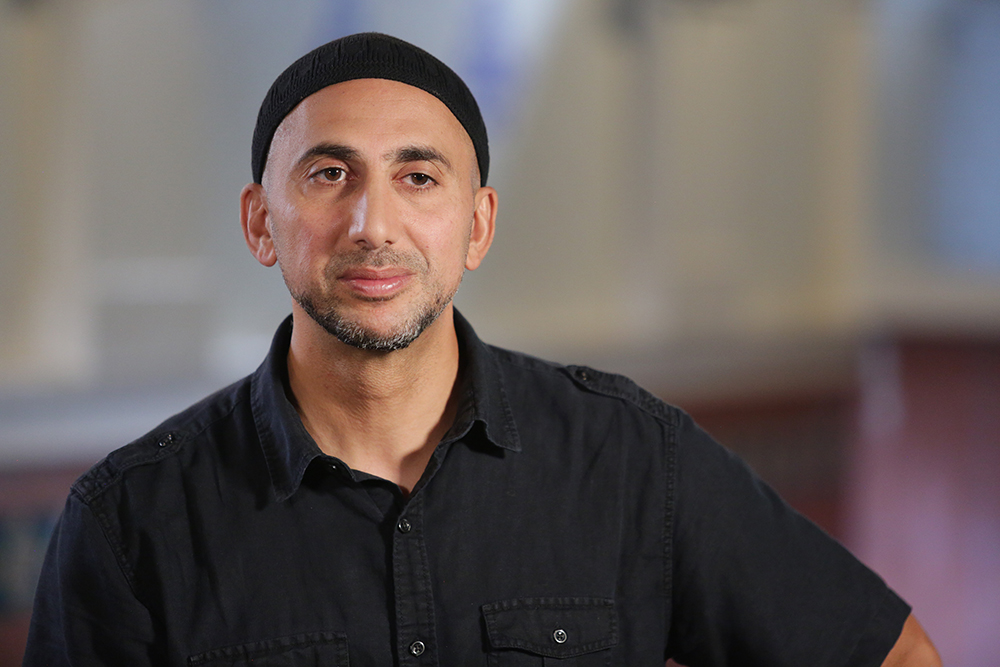
Rami Nashashibi in 2017. Photo © John D. and Catherine T. MacArthur Foundation- used with permission.
It’s through this application of Black Muslim ideas to all who are considered “other” in American society that Nashashibi views Islam as intrinsically connected to non-Muslim groups, who are served equally by IMAN.
“When you’re in spaces with guys who don’t identify as Muslim, and they’re part of your programs because they get an opportunity, you show the relevance of your identity and your faith. It’s up alongside people who get a chance to experience it in their own faith terms … wherever their journey is.”
Indeed, Nashashibi notes that in his community, “it’s not just responding to the urgent need, … (it’s) demonstrating that all of those needs are our collective needs. In other words, it’s not ‘those folks.’ It’s us.”
Therein lies a path to a justice-forward, outward-facing, diversity-embracing form of Muslim American community.
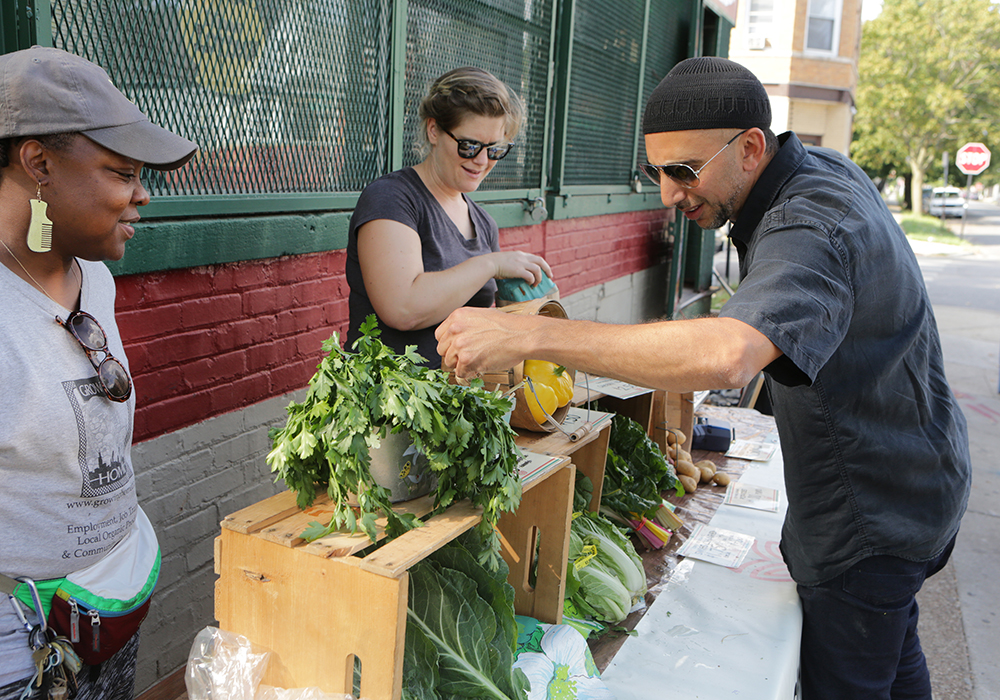
Rami Nashashibi in Chicago in 2017. Photo © John D. and Catherine T. MacArthur Foundation- used with permission.
